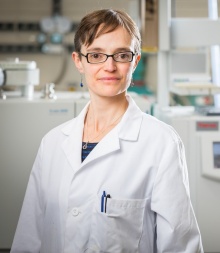 As the arctic warms we can look to the past for clues to our future.
As the arctic warms we can look to the past for clues to our future.
Elizabeth Thomas, assistant professor of geology at the University at Buffalo, examines Greenland’s lakes for answers.
Elizabeth K. Thomas is a paleoclimatologist and geochemist. Her research aims to understand how changes in the Earth’s climate have affected precipitation patterns in various parts of the world — including the Arctic, areas affected by the Asian Monsoon, and the Great Lakes region — over the past several hundred thousand years.
Thomas conducts field research in the Arctic as part of teams studying how ice sheets and plant life may react to rising temperatures and altered Arctic precipitation patterns.
Closer to home, she is leading a project to examine the history of lake effect snow in Upstate New York. The goal of this work is to help scientists better predict whether such storms could become more frequent or intense in the future as the Earth warms.
A Wetter Arctic
As the Earth gets warmer, the Arctic is changing rapidly. The region is not only heating up, but also becoming wetter.
My research explores why this is happening.
I study what Earth’s climate was like during ancient warm periods. By learning about the past, we can make better predictions about the future.
To study the Arctic, my team travels to Greenland every summer. We hop on a helicopter, fly to lush valleys filled with lakes, and set up camp. Every morning, we call a support team to let them know we’re OK. Then, after a breakfast of oatmeal and coffee in our cook tent, we climb in a boat.
We collect mud from the bottom of lakes. The mud is in layers, like the pages of a book, and each layer holds leaf waxes made by ancient plants. These waxes can tell us about a region’s past climate.
We used these techniques to study what happened when western Greenland underwent a period of warming about 8,000 years ago.
Our research indicates that during that time, western Greenland became more humid. We also found evidence that two different processes contributed to this change.
First, as the Arctic gets warmer, sea ice melts. This causes more water to evaporate from the ocean. Secondly, as the Earth warms, humidity increases more in regions near the equator. Eventually, this imbalance causes moist, tropical air to move into the drier Arctic.
Both processes may be at play again today, leading to increases in Arctic humidity and, ultimately, precipitation.
Research like ours can improve predictions of Arctic and global climate. Though the Arctic seems far away, what happens there matters everywhere: Arctic precipitation patterns can impact how quickly glaciers melt, and therefore how quickly global sea levels rise.

Comments
One response to “Elizabeth Thomas, University at Buffalo – A Wetter Arctic”